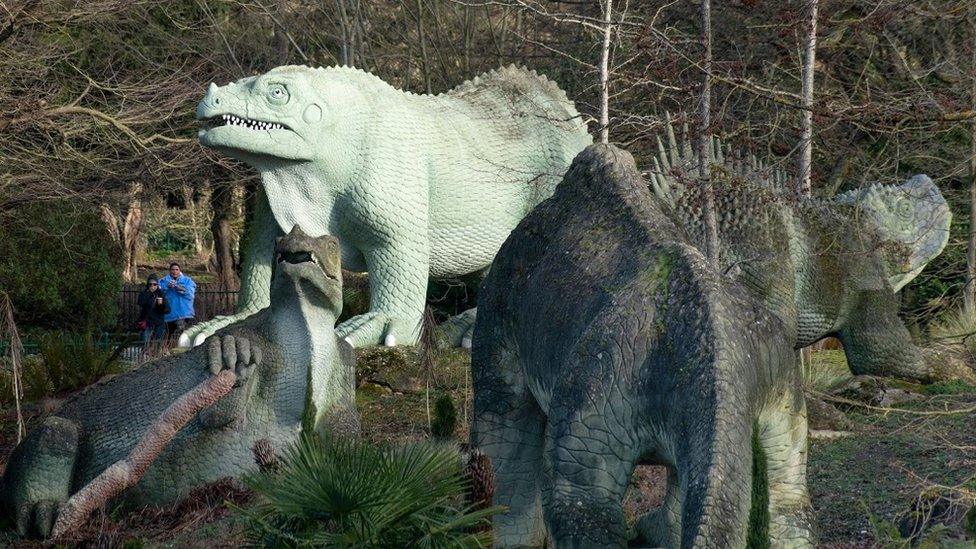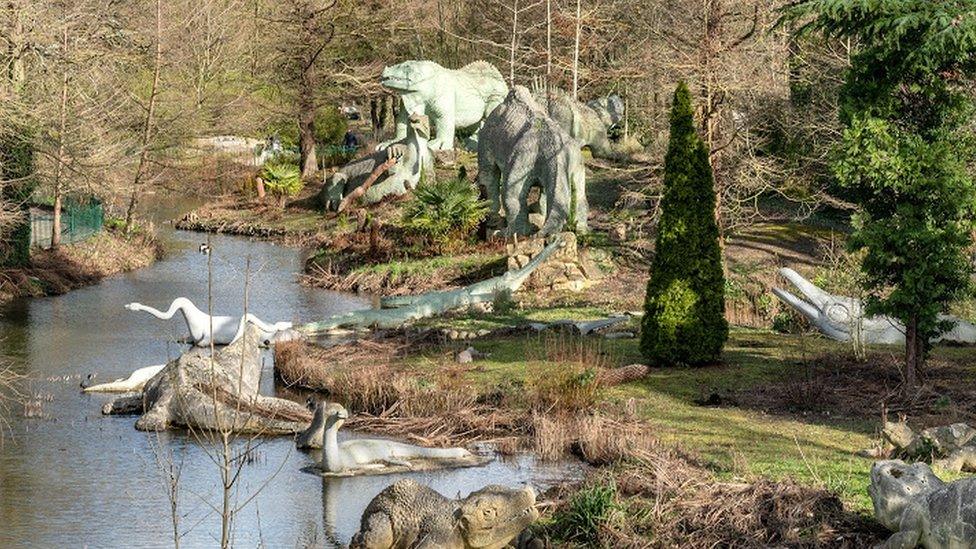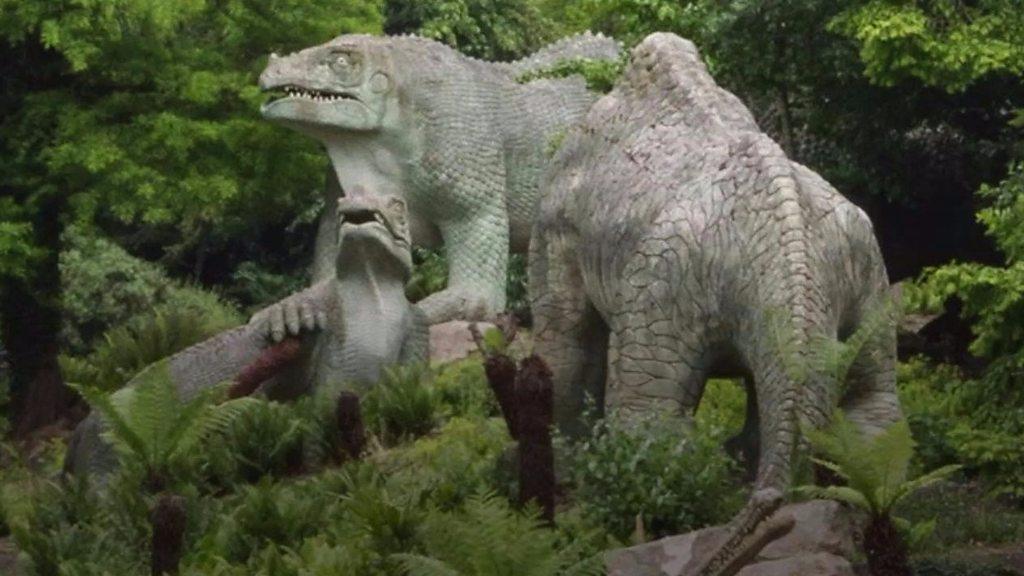Crystal Palace dinosaurs added to 'at risk' register
- Published

Some of the sculptures are displaying signs of cracks and disrepair
A dinosaur park featuring 30 reptilian replicas has been added to a list of sites at risk of being lost.
The collection of life-size creations at Crystal Palace Park in London has developed cracks, with some statues in danger of losing toes, teeth and tails.
Historic England has added the Grade I-listed creations, which date back to the mid-1850s, to its "at risk" register.
"We don't want them to become extinct again," the government body said.
The dinosaurs were created between 1852 and 1855 by artist Benjamin Waterhouse Hawkin.
Although the cause of their deterioration is not yet known, ground movement on artificial islands or changing water levels in surrounding lakes is suspected.
Duncan Wilson, from Historic England, said: "By adding them to our heritage at risk register, we can focus attention on them and ensure a lasting programme of repairs and on-going maintenance is carried out."
A bid to save the Crystal Palace Park dinosaurs saw Guns N' Roses' Slash donate funds in 2018
Historic England said the creatures represented the cutting edge of scientific knowledge at the time and would have been "an extraordinary sight" to the Victorians.
They are now deemed to be inaccurate by current understanding.
The dinosaurs are arranged in chronological order on three artificial islands and in lakes in the south section of the park.
You may also like:
Dr Ellinor Michel, from Friends of Crystal Palace Dinosaurs, said: "While it is distressing that the sculptures need to be called 'at risk', it is the best way for them to get the professional conservation work they need."
An investigative survey is due to be carried out on the site, with conservation work beginning once the assessment of the cause of the damage to the statues has been completed.
The entire restoration project is estimated to cost about £800,000.
Bromley Council's Peter Morgan said money for restoration would also be "generated by the sale of sites on the periphery of the park" currently subject to planning permission.

Conservation work will begin once an assessment of the cause of the damage to the statues has been completed
Historic England's "at risk" register seeks to protect places and monuments being lost as a result of neglect, decay or inappropriate development.
It includes historic buildings, wrecks, battlefields, monuments as well as parks and gardens.
- Published28 November 2018
